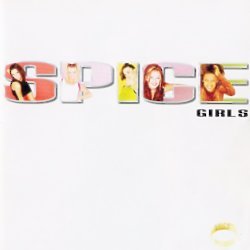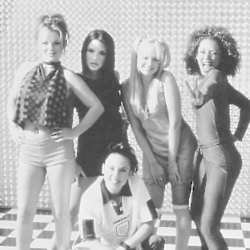
Following The Spice Girls' triumphant cameo at yesterday's Olympic closing ceremony, it’s more than enough of an excuse to dust off those cassette copies of Wannabe and bop around like it’s 1996.
While they may not have embodied everything about the 1990s woman, the lack of ripped jeans saw to that, The Spice Girls’ didn’t just take part in 1990’s culture, they made it. Worldwide the phrase ‘girl power’ became a by-word for women growing in confidence, driven on by their idols on stage.
They weren’t the first manufactured band, but they were to become the highest profile one. We all know their story though. The wanted advert in Stage magazine bringing them together after Bob and Chris Herbert wanted to create a girl-group. Weirdly enough their original plan was to appeal to the male audience, as they felt the market was over saturated with boy-bands who only appealed to female audiences.
The impact they were going to have though couldn’t have been any more different.
We all remember the impact of Wannabe. Fast, fun and fizzier than a shook-up can of soft drink, Wannabe took the charts by storm, despite a largely negative reaction. After being played 502 times in a week on music TV channel The Box, the single went on to debut at number three in the charts, only to climb to number one, where it would stay for the next seven weeks.

The single went on to be number one in 31 different countries around the world, with the girl’s spanning continents at their very first attempt, becoming the biggest selling single by an all girl group of all time. Not bad going for a band that Top of The Pops magazine’s editor said was “not going to happen.”
Wannabe changed the rules of pop in the UK, creating an alternative to the Britpop trend sweeping the nation and harking back to the 1980’s era of sugar sweet pop that even Take That didn’t attempt to occupy years earlier. It was a marke ripe for the picking as since the break-up of Take That, young girls had been left without a massive band to get behind. The boy band may have been the main genre in pop, but the dissolution of its main powerhouse left it prime for the taking.
The Spice Girls followed up Wannabe with Say You’ll Be There and 2 Become 1, both hitting number one in a collective 53 countries and the latter becoming the fastest selling single of the year and the group’s first Christmas chart-topper.
Everyone knew an album would be big, but no-one could have predicted the success it achieved. With 1.8 million copies sold in the UK alone in the first seven weeks, Spice made the girls the fastest selling artists since Beatlemania consumed the nation and selling over 20 million copies worldwide.
Like Beatlemania, the fashion industry took notice. All of a sudden, platform shoes, mini dresses and leopard print all started to dominate the high street. The prominent idea though to come through though was identity. Each of the girls wore what they represented, leading to a trend of individualism and girls mixing and matching outfits to suit their personalities, even if they were in the end truly hideous amalgamations. As long as it still had platform shoes and some other link to the girls, it was cool.
It helped that there was a whole range of clothes branded with the band’s names and logos, as The Spice Girls became a marketing juggernaut, with just about everything available in a Spice Girls variant.
A ridiculously successful second album Spiceworld (that holds up far better to this day and is easily their best album) continued the path of world dominance the girls had started, constantly defying critics and finding fans all around the globe. You couldn’t move anywhere on the planet without seeing one of the Spice Girl’s smiling faces either on TV or a billboard.

Following the staggering success of the album, The Spice Girls had the world at their feet. So, like The Monkees and The Beatles, they decided to make the most of it, and get themselves a film. So, Spiceworld the film was born, starring themselves being, well, stylized versions of themselves. It was universally panned by critics (with good reason, the film’s a mess) but even that didn’t put the fans off.
The end started early the next year though, after Gerri Halliwell decided to leave the group to pursue a solo career to mixed results. Her loss from the band didn’t seem terminal at first, with the group going on to collect a third successive Christmas number one that year, yet the end was near.
After taking a break from recording, the pop world had moved on. Boy-bands were as strong as ever, and the American pop stars had started their all-out assault on the charts. Both Britney Spears and Christina Aguilera had got number ones on their first attempts. All of these elements conspired to make the third Spice Girls album Forever both a critical and commercial flop.
A monster of 1990’s pop culture and the progenitors of the bubblegum pop craze that filled the late nineties and early 2000s, The Spice Girls are not just responsible for the 55 million record sales they had, but the similar success of Britney, Christina and Girls Aloud. Hell, Girls Aloud were purposefully engineered to try and re-ignite that Spice Girls spark.
They burned extraordinarily bright and shortly, like many superstars in a decade of incredibly fickle musical tastes, but The Spice Girls’ cultural impact had been far bigger than even the Herbert’s could have dreamed of.
FemaleFirst Cameron Smith
Tagged in The Spice Girls Olympics London 2012

